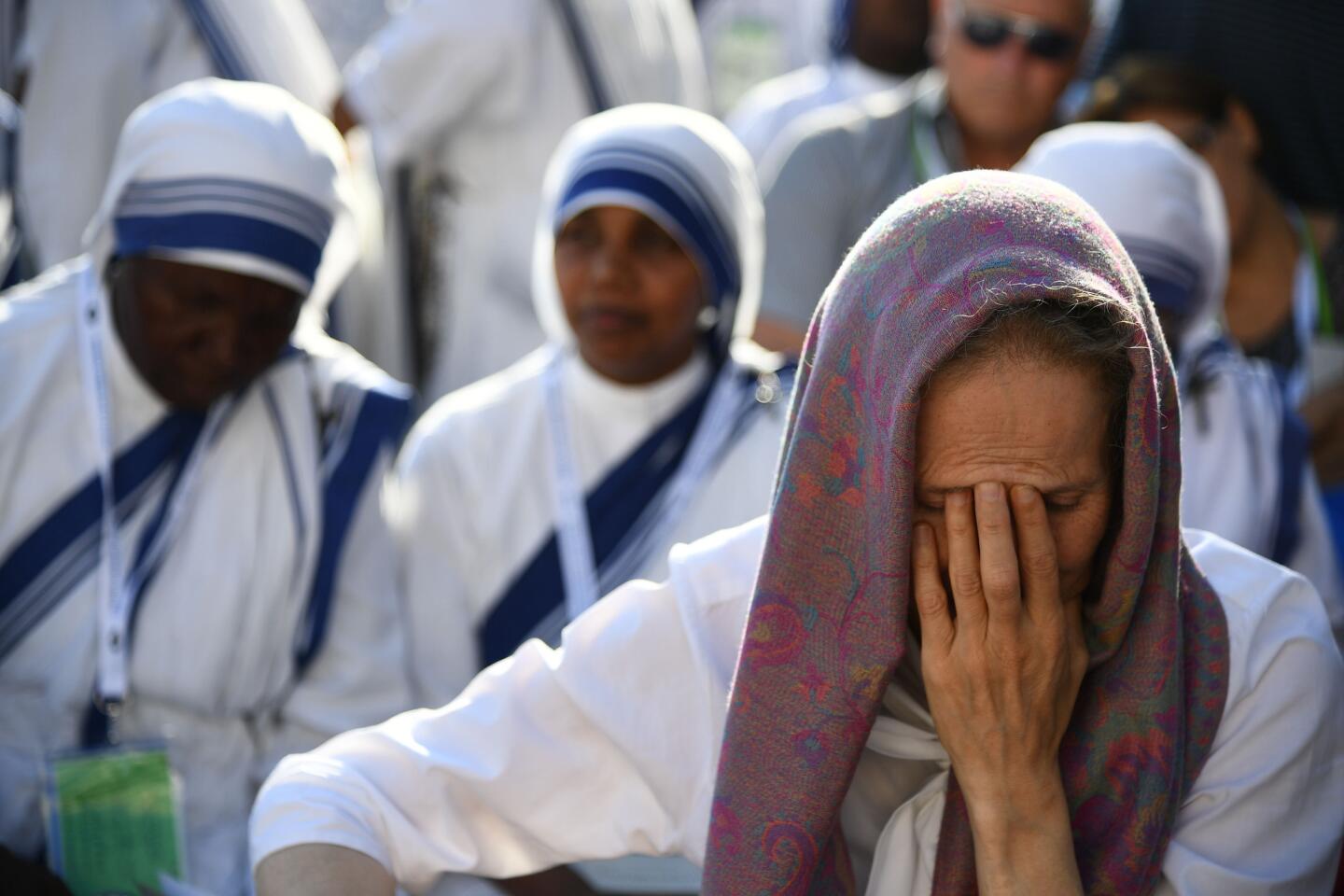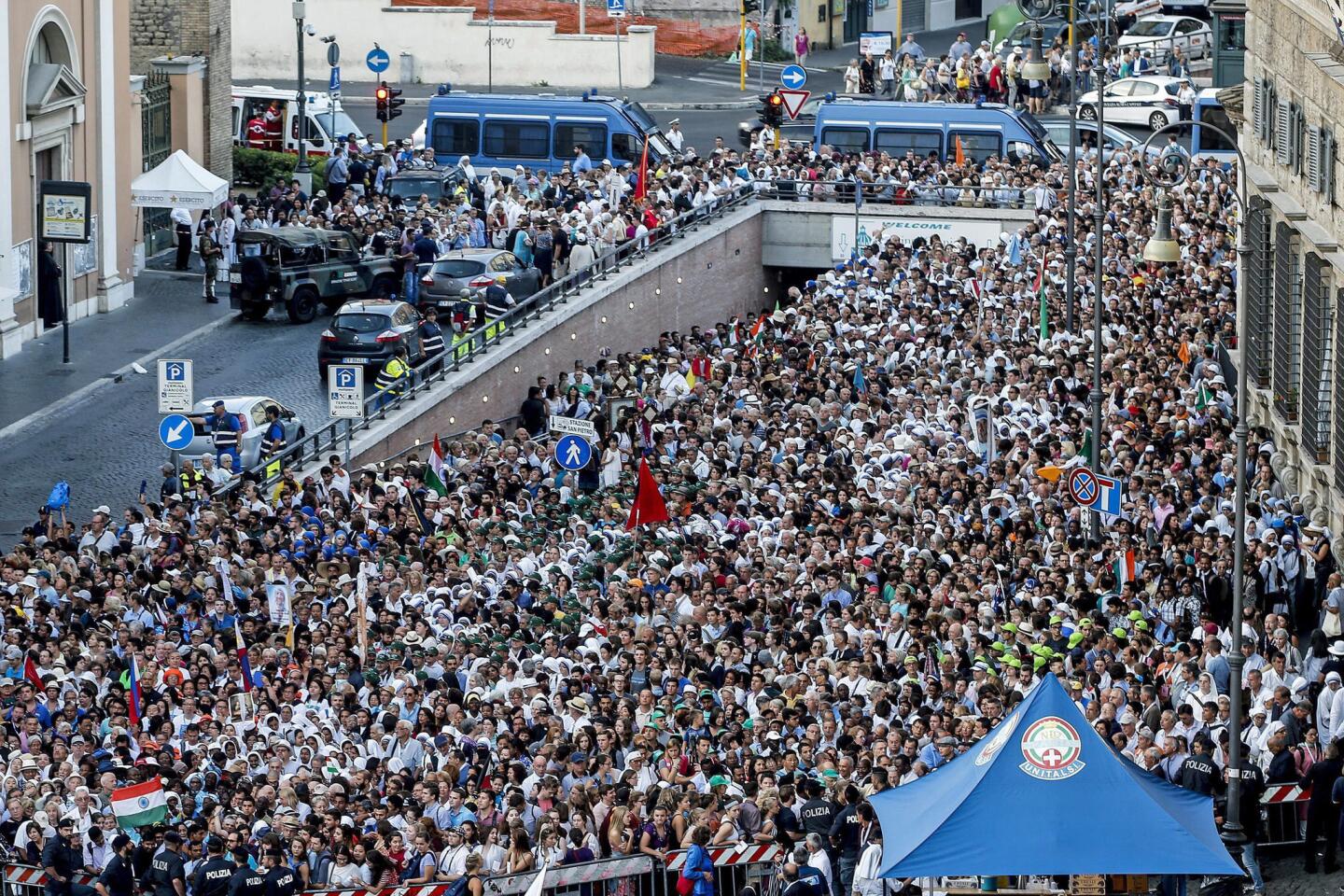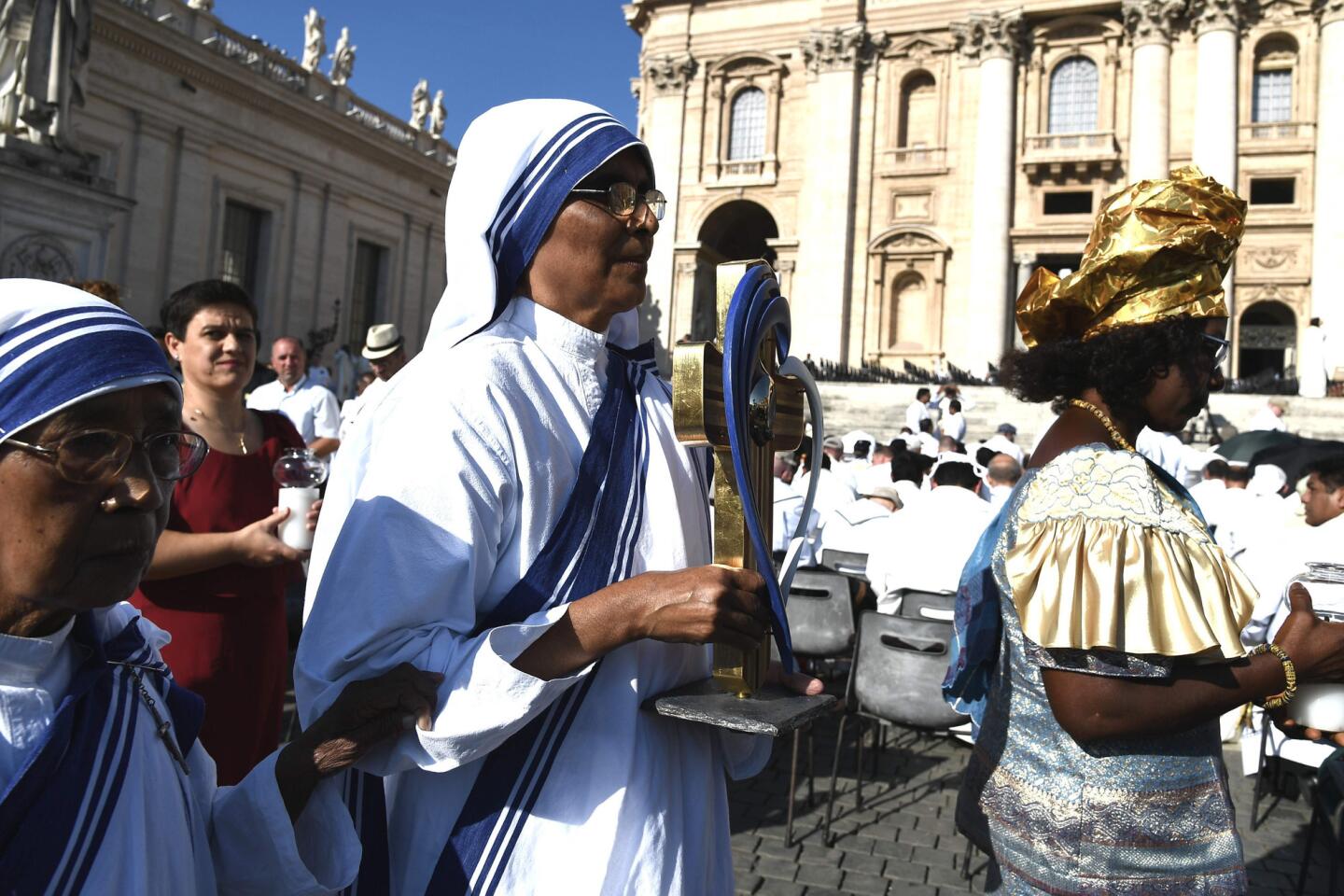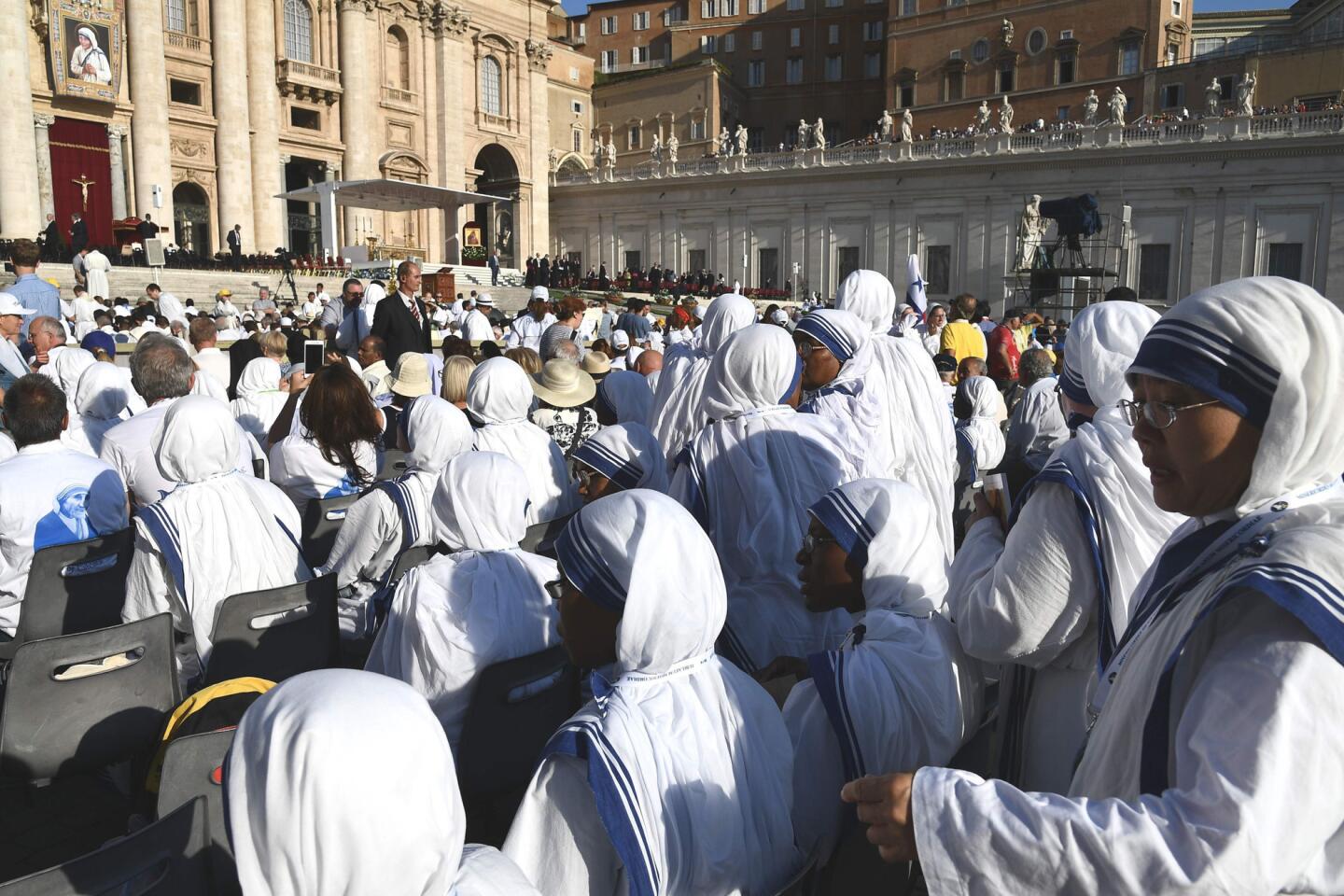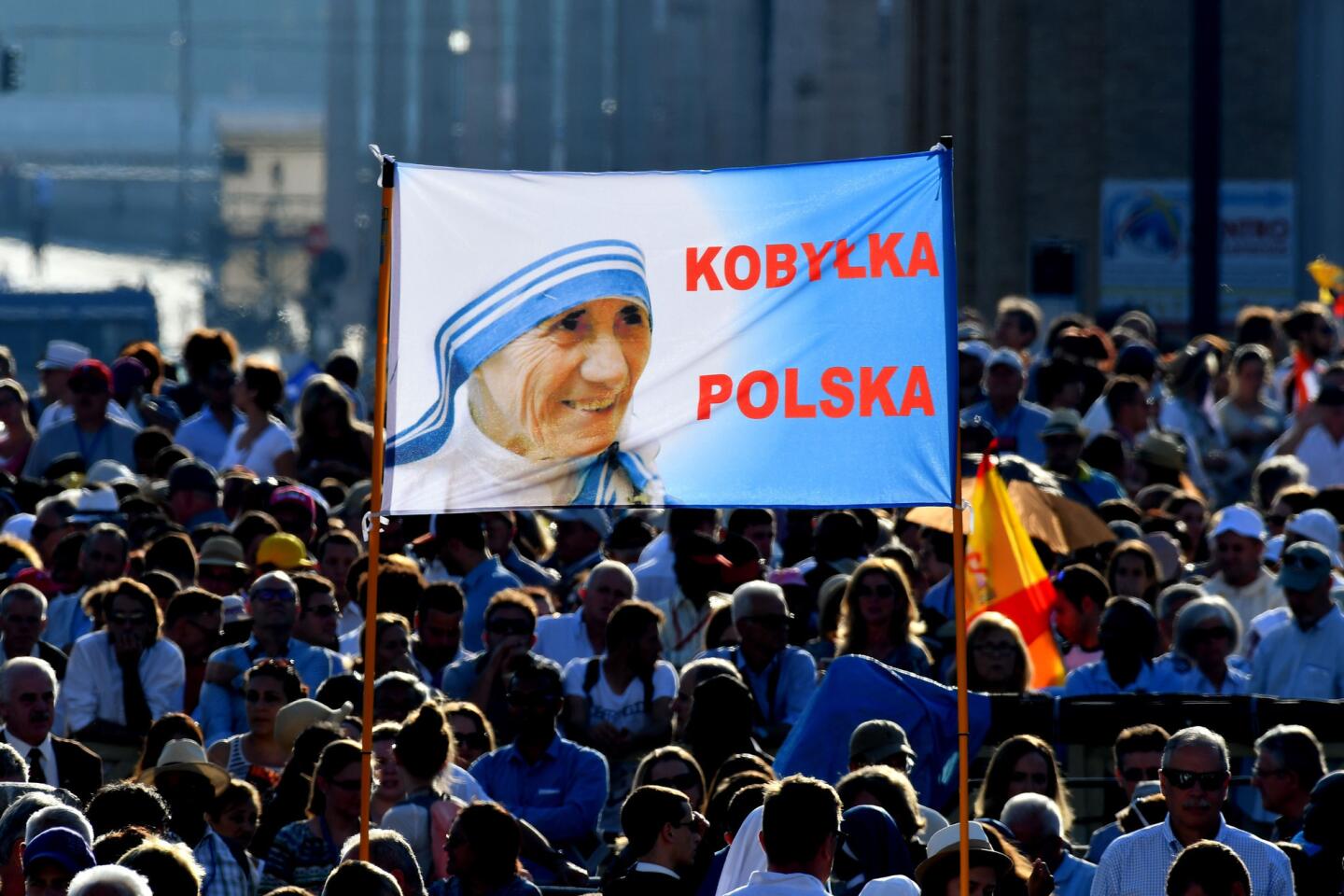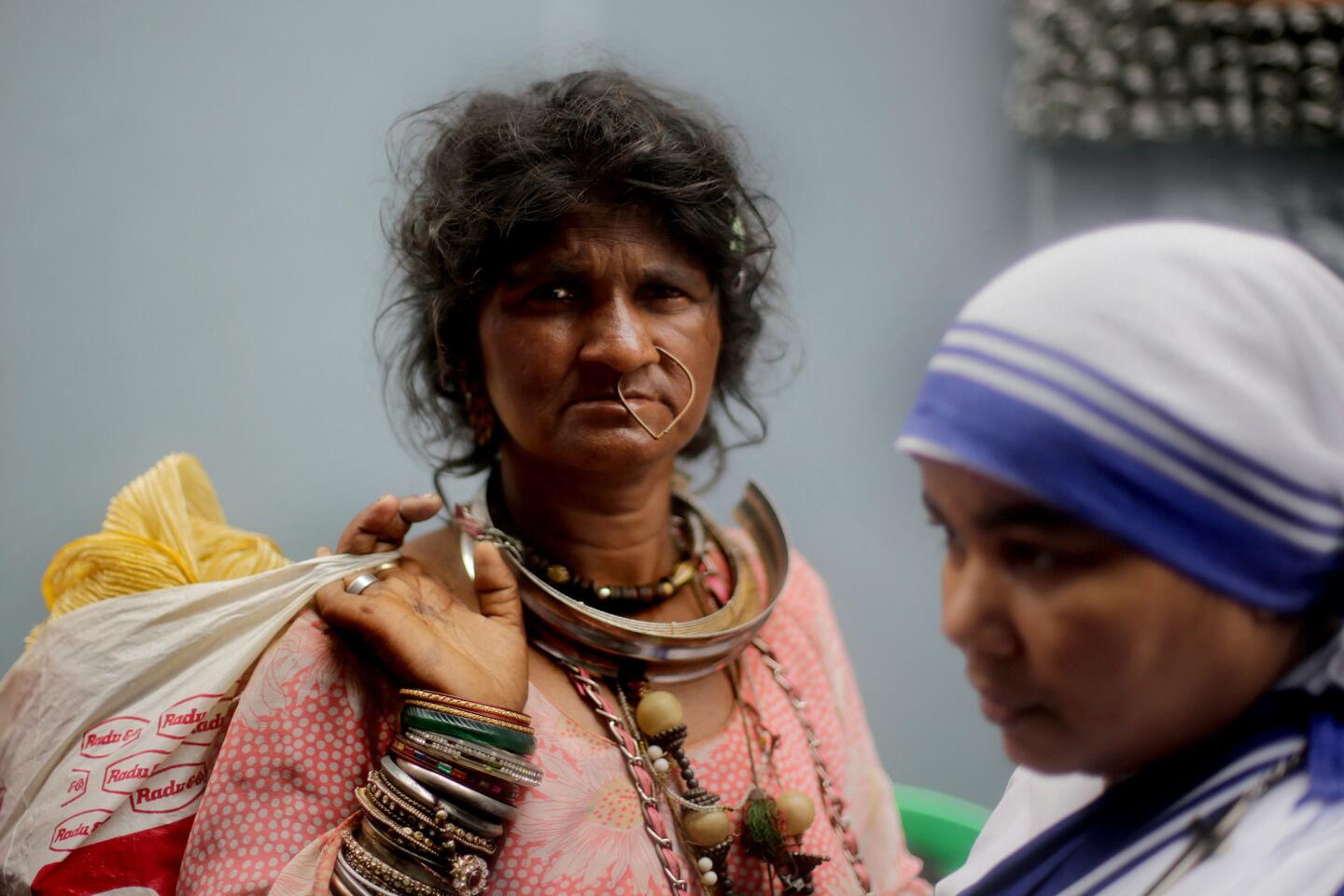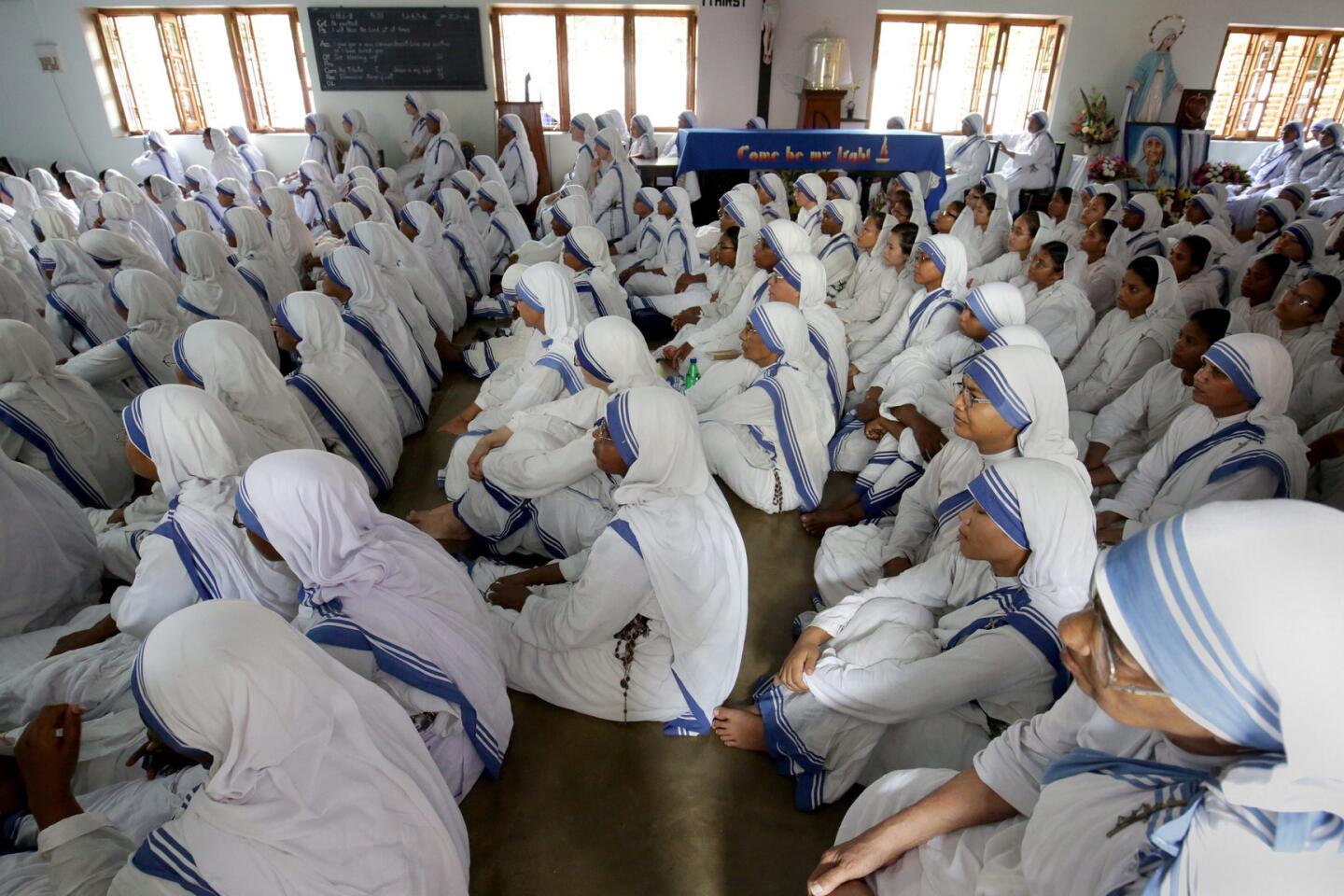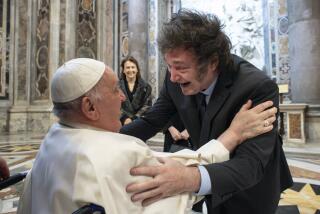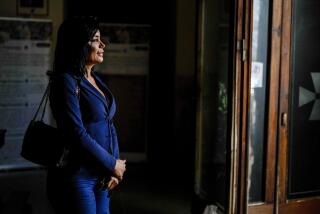Mother Teresa declared a saint as Pope Francis lauds her in Vatican ceremony
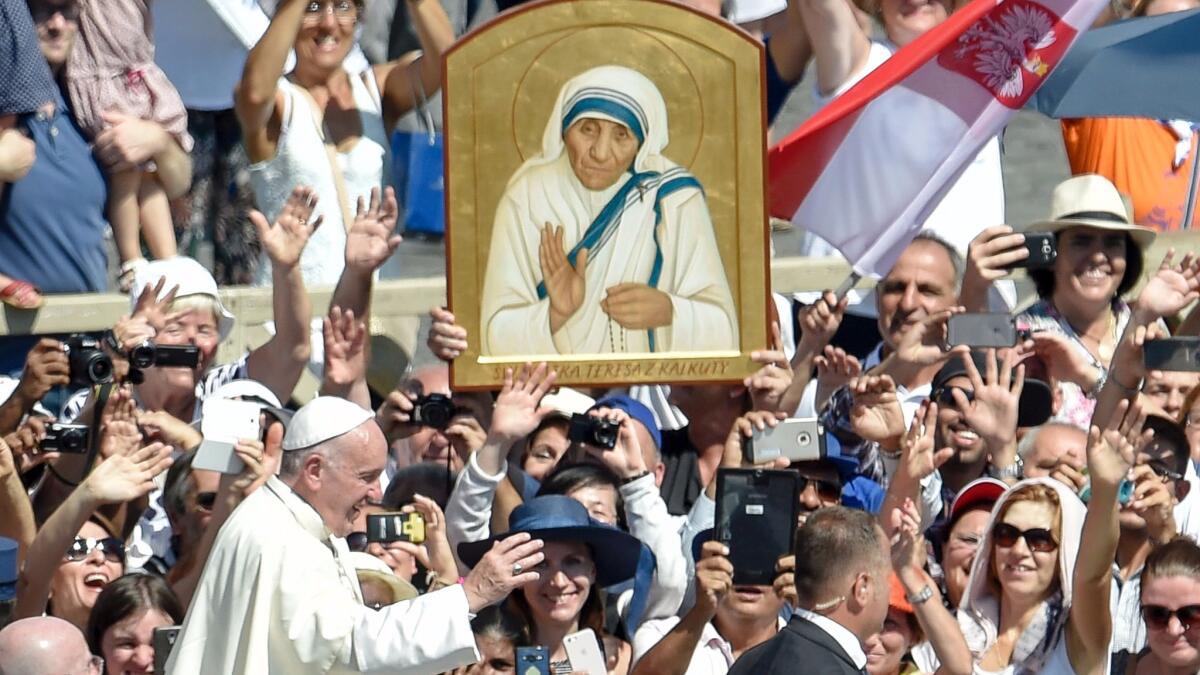
- Share via
Reporting from Vatican City — Wearing their blue-trimmed saris, nuns from Mother Teresa’s religious order, the Missionaries of Charity, excitedly led 1,500 homeless people through the gates of the Vatican.
Amid a crowd of 120,000 people pressed into St. Peter’s Square, chefs dispensed fresh-baked pizzas from three ovens brought in for the occasion: a luncheon in the Vatican auditorium.
It was a fitting tribute to Mother Teresa’s commitment to the poor, on the day that Pope Francis declared her a saint.
Nineteen years after her death, the pope told the crowd Sunday that the nun’s decades of toil in the slums of Calcutta made her a “model of holiness.”
“She bowed down before those who were spent, left to die on the side of the road, seeing in them their God-given dignity,” the pope said at the canonization ceremony for the nun, who died in 1997 at the age of 87, and was put on an unusually swift track toward sainthood just six years later.
Also present in the square for the ceremony were 13 heads of state, including Queen Sofia of Spain. Sweltering temperatures failed to dampen the party spirit in the colonnaded square. Pilgrims held flags and cheered loudly as Francis circled around after the ceremony, waving from his popemobile.
In his homily, the pontiff focused on Mother Teresa’s efforts to help those living on the edge of society, a theme he has made central to his papacy.
“Her mission to the urban and existential peripheries remains for us today an eloquent witness to God’s closeness to the poorest of the poor,” he said. “Today, I pass on this emblematic figure of womanhood and of consecrated life to the whole world of volunteers: May she be your model of holiness!”
Born Agnes Gonxha Bojaxhiu in 1910 to an Albanian family in Skopje, then part of the Ottoman Empire, and now Macedonia, Mother Teresa became a nun in Ireland before founding her own order in India in 1946, which became the Missionaries of Charity and built a global empire of orphanages and shelters.
She received the Nobel Peace Prize in 1979, but was also attacked for the sanitary conditions in her clinics and her opposition to family planning.
Critics also challenged her alleged enthusiasm for rubbing shoulders with world leaders.
Francis put a different gloss on that Sunday, saying that Mother Teresa had “made her voice heard before the powers of this world, so that they might recognize their guilt for the crime of poverty they created.”
And he strongly backed her opposition to abortion — a part of the Roman Catholic church’s teaching — saying that she “was committed to defending life, ceaselessly proclaiming that ‘the unborn are the weakest, the smallest, the most vulnerable.’”
The ceremony came as a climax to a Holy Year of Mercy that the pope has proclaimed, in which he has stressed the primacy of mercy over Catholic dogma.
In his homily he portrayed Mother Teresa as a role model.
“For Mother Teresa, mercy was the salt which gave flavor to her work, it was the light which shone in the darkness of the many who no longer had tears to shed for their poverty and suffering,” he said.
“May this tireless worker of mercy help us to increasingly understand that our only criterion for action is gratuitous love, free from every ideology and all obligations, offered freely to everyone without distinction of language, culture, race or religion,” he added.
The nun will henceforth be officially named St. Teresa of Calcutta, although in his homily, Pope Francis said he expected her to continue to be called Mother Teresa.
Attendance for Sunday’s ceremony was far below the 300,000 who turned out at St. Peter’s in 2003 for Mother Teresa’s beatification — an earlier stage in the process toward sainthood. Fears over the possibility of a terrorist attack may have deterred some from taking part. About 3,000 police were on hand to provide security for Sunday’s event.
Muslims, Hindus and Catholics were among those present, including Albanians and a large Indian contingent.
“She was a living saint,” said Vincy Mathew, 40, who grew up in Kerala, India, before moving to Italy to work as a nurse 10 years ago.
“She loved poor people without distinction — she is an Indian hero,” she said.
Donning sunglasses against the bright sun in St. Peter’s Square, Albana Krasniqi, 44, said it was “amazing” to be present for the canonization.
“Saints don’t get made every day,” said the Albanian-born Krasniqi, who left war-torn Kosovo in 1995 and now works as a financial analyst in New York.
“Albanians cherished Mother Teresa, and my family has talked about her since I can remember,” said Krasniqi, who traveled to Rome for the canonization. “She was just part of the conversation.”
Krasniqi now volunteers with a charity to help bring 1,500 children with heart conditions to the U.S. from around the world every year for operations.
“Mother Teresa showed us it doesn’t matter where you come from. If you have love in your heart, you can do miracles,” she said.
Avni Dervishi, 43, draped a flag over a barrier to promote the status of Kosovo, the Balkan region with a large Albanian community where Mother Teresa spent time when she was young, and which has been recognized as an independent state by more than 100 countries, but not the Vatican.
“My mother told me the best religion was helping people, and Mother Teresa was a symbol of that,” said Dervishi.
Touching his flag, he added, “We [have] given the Vatican a saint, now I [am] hoping they will recognize Kosovo.”
At the Mother House of the Missionaries of Charity in Kolkata, as the city is now known, hundreds of people watching the Mass on television clapped with joy when Francis made the declaration of sainthood. They gathered around Mother Teresa’s tomb, which was decorated with flowers, a single candle and a photo of the tiny saint.
“I am so proud to be from Kolkata,” said Sanjay Sarkar, a high school student on hand for the celebration. “Mother Teresa belonged to Kolkata, and she has been declared a saint.”
Kington is a special correspondent. The Associated Press contributed to this article from Kolkata.
ALSO
Pope Francis canonized Father Junipero Serra, saying he defended Native Americans
10 who became saints for their work in the U.S.
UPDATES:
4:11 p.m.: Updated with additional detail from the scene.
11:29 a.m.: Updated with additional detail from the scene.
9:00 a.m.: This article has been updated with additional quotes from pilgrims in St. Peter’s Square.
5:35 a.m.: This post has been updated with Times reporting.
3:30 a.m.: Updated with quotes from the homily.
2:15 a.m.: Updated with details on the ceremony and the crowd.
Sept. 4, 1:45 a.m.: Updated with the pope’s declaration.
This article was first posted at 11:15 p.m. Sept. 5.
More to Read
Sign up for Essential California
The most important California stories and recommendations in your inbox every morning.
You may occasionally receive promotional content from the Los Angeles Times.


